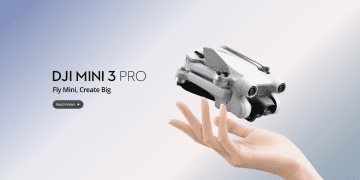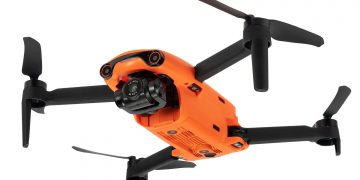The rapid advancement of drone technology has brought about a new era of possibilities, from breathtaking aerial photography to efficient agricultural monitoring. However, with these possibilities come challenges, especially in safety and privacy. As a result, governments worldwide have been grappling with how to regulate the use of drones. This article delves deep into the introduction of drone laws, their evolution, their importance, and the implications for drone enthusiasts and professionals alike.
International Drone Laws Overview
For those interested in understanding drone regulations in specific countries, we’ve compiled a list of comprehensive guides for some of the major regions:
- UK Drone Laws: Get to know the regulations and guidelines for flying drones in the United Kingdom. Whether you’re a hobbyist or a professional, it’s essential to be aware of the UK’s specific rules to ensure safe and legal drone operations.
- USA Drone Laws: The United States has its own set of regulations governing drone flights. From registration requirements to flight restrictions, our guide covers everything you need to know about flying drones in the USA.
- Australian Drone Laws: Australia’s vast landscapes make it a popular destination for drone enthusiasts. However, it’s crucial to familiarize yourself with the country’s drone regulations to ensure you’re flying within the law.
The Dawn of the Drone Era
Drones, known as Unmanned Aerial Vehicles (UAVs) or Unmanned Aircraft Systems (UAS), have been around longer than most people realize. Initially developed for military applications, drones have now found their way into the hands of civilians and commercial entities. Their popularity has surged due to their versatility and the unique perspectives they offer.
However, this surge in popularity has not been without its challenges. Incidents of drones interfering with commercial aircraft, invading private properties, and causing safety concerns have made headlines. These incidents underscored the need for regulations.
The Evolution of Drone Laws
The first set of drone regulations were rudimentary, often reactionary, and aimed at addressing immediate concerns. Over time, as the technology evolved and its applications expanded, the laws underwent revisions to accommodate these changes.
- Military to Civilian Transition: Initially, drones were the purview of the military. However, as they became commercially available, the need for civilian regulations became apparent.
- Drone Safety First: The primary concern for regulatory bodies was safety. There was a real risk of collisions with drones sharing airspace with manned aircraft. Regulations were introduced to ensure drones did not endanger other aircraft or people on the ground.
- Drone Privacy Concerns: Drones equipped with cameras raised concerns about privacy invasion. Laws were introduced to protect individuals from unauthorized surveillance.
- Drone Commercial Use: As businesses began to see the potential of drones, from delivery to aerial surveys, regulations had to be updated to facilitate these uses while ensuring safety and privacy.
Why Understanding Drone Laws is Crucial
Drone Safety
At the heart of drone regulations is the safety of all. Understanding and adhering to these laws ensures that the skies remain safe for everyone.
- Protecting Rights: Drone laws also aim to protect the rights of individuals, ensuring that their privacy is not invaded and that they are not subjected to unauthorized surveillance.
- Avoiding Penalties: Ignorance of the law is not an excuse. Drone operators who violate regulations, knowingly or unknowingly, can face hefty fines and even imprisonment.
- Commercial Viability: For businesses, adhering to drone laws is crucial for operations. Violations can result in revoked licenses, fines, and a tarnished reputation.
Critical Components of Drone Laws
Drone Registration Many countries require drones, especially those above a certain weight, to be registered. Registration helps authorities keep track of drones and ensures accountability.
No-Fly Zones
Certain areas, such as near airports, military bases, and government buildings, are designated as no-fly zones. Flying drones in these areas is prohibited.
- Altitude Restrictions: There are limits to how high drones can fly, often to prevent interference with manned aircraft.
- Operator Requirements: Some countries require drone operators to undergo training and obtain a license, especially for commercial operations.
- Equipment Requirements: Depending on the intended use and area of operation, drones might need to be equipped with specific equipment, such as lights or transponders.
Global Variations in Drone Laws
While there are common themes in drone regulations worldwide, specific laws can vary significantly from one country to another. For instance:
- USA: The Federal Aviation Administration (FAA) oversees drone regulations. Drones used for recreational purposes need to be registered, and there are specific rules for commercial use.
- UK: The Civil Aviation Authority (CAA) mandates that drones weighing over 250 grams be registered. There are also restrictions on flying near airports and at certain altitudes.
- Australia: The Civil Aviation Safety Authority (CASA) requires drones weighing more than 100 grams to be operated by a licensed pilot in certain areas.
The Future of Drone Laws
As drone technology continues to evolve, so will the laws governing them. The integration of AI, improvements in battery life, and the potential for drone swarms will all pose new challenges for regulators.
As drones become more commonplace, there will be a push for more standardized global regulations, especially for commercial operations that span multiple countries.
Drones offer incredible potential, from revolutionizing industries to providing new forms of entertainment. However, with this potential comes responsibility. Understanding and adhering to drone laws is not just about avoiding penalties; it’s about ensuring that the skies remain safe and that the rights of individuals are respected.
As drone enthusiasts and professionals, it’s our duty to stay informed about the latest regulations, advocate for fair and sensible laws, and always operate our drones safely and respectfully.
Note: This article provides a general overview of drone laws and is not a substitute for legal advice. Always consult local regulations and legal experts when operating drones.













